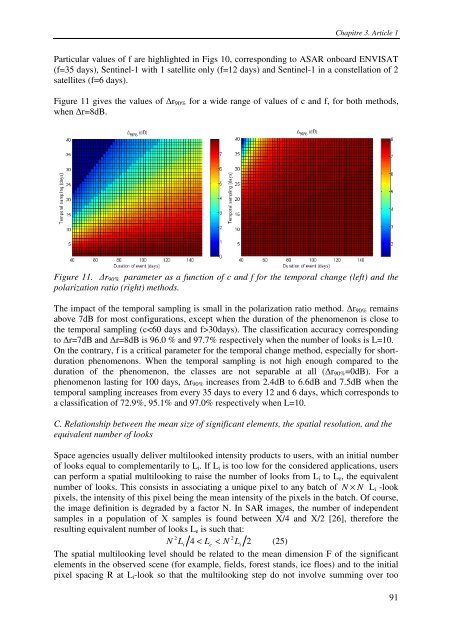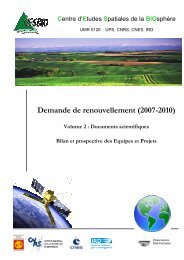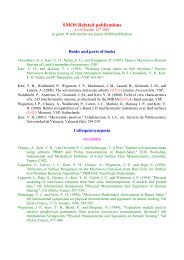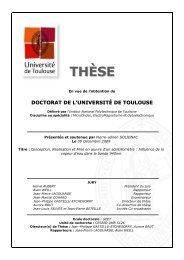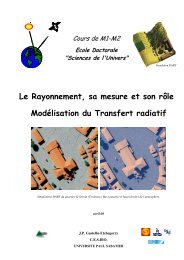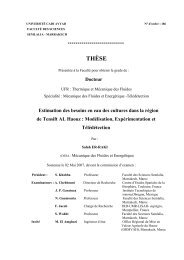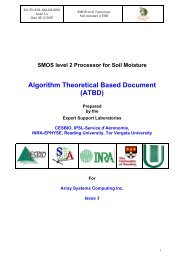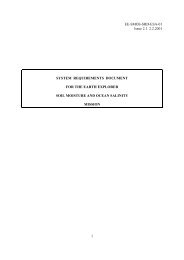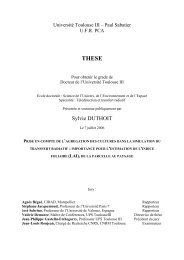THÃS EE - CESBIO - Université Toulouse III - Paul Sabatier
THÃS EE - CESBIO - Université Toulouse III - Paul Sabatier
THÃS EE - CESBIO - Université Toulouse III - Paul Sabatier
You also want an ePaper? Increase the reach of your titles
YUMPU automatically turns print PDFs into web optimized ePapers that Google loves.
Chapitre 3. Article 1Particular values of f are highlighted in Figs 10, corresponding to ASAR onboard ENVISAT(f=35 days), Sentinel-1 with 1 satellite only (f=12 days) and Sentinel-1 in a constellation of 2satellites (f=6 days).Figure 11 gives the values of ∆r 90% for a wide range of values of c and f, for both methods,when ∆r=8dB.Figure 11. ∆r 90% parameter as a function of c and f for the temporal change (left) and thepolarization ratio (right) methods.The impact of the temporal sampling is small in the polarization ratio method. ∆r 90% remainsabove 7dB for most configurations, except when the duration of the phenomenon is close tothe temporal sampling (c30days). The classification accuracy correspondingto ∆r=7dB and ∆r=8dB is 96.0 % and 97.7% respectively when the number of looks is L=10.On the contrary, f is a critical parameter for the temporal change method, especially for shortdurationphenomenons. When the temporal sampling is not high enough compared to theduration of the phenomenon, the classes are not separable at all (∆r 90% =0dB). For aphenomenon lasting for 100 days, ∆r 90% increases from 2.4dB to 6.6dB and 7.5dB when thetemporal sampling increases from every 35 days to every 12 and 6 days, which corresponds toa classification of 72.9%, 95.1% and 97.0% respectively when L=10.C. Relationship between the mean size of significant elements, the spatial resolution, and theequivalent number of looksSpace agencies usually deliver multilooked intensity products to users, with an initial numberof looks equal to complementarily to L i . If L i is too low for the considered applications, userscan perform a spatial multilooking to raise the number of looks from L i to L e , the equivalentnumber of looks. This consists in associating a unique pixel to any batch of N × N L i -lookpixels, the intensity of this pixel being the mean intensity of the pixels in the batch. Of course,the image definition is degraded by a factor N. In SAR images, the number of independentsamples in a population of X samples is found between X/4 and X/2 [26], therefore theresulting equivalent number of looks L e is such that:22N Li4 < Le< N Li2 (25)The spatial multilooking level should be related to the mean dimension F of the significantelements in the observed scene (for example, fields, forest stands, ice floes) and to the initialpixel spacing R at L i -look so that the multilooking step do not involve summing over too91


